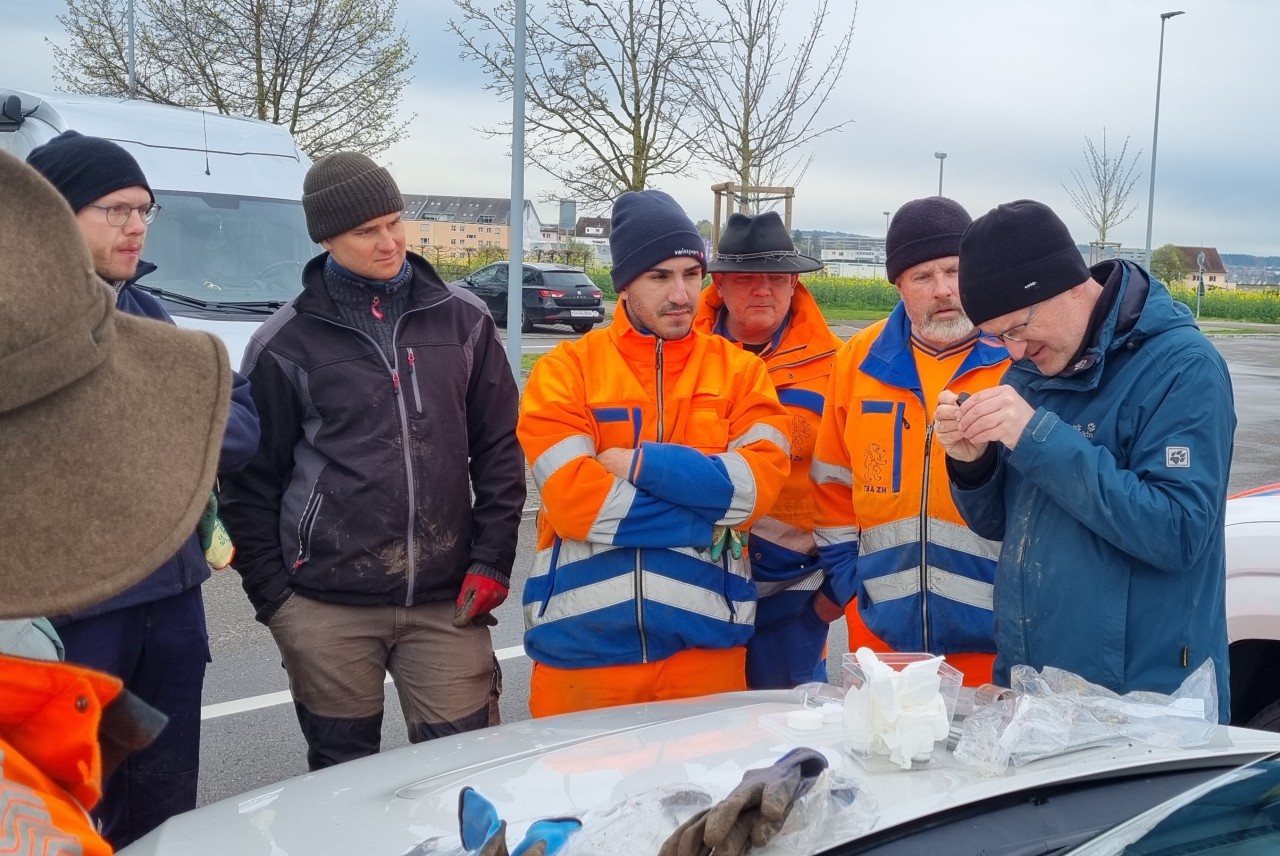Popillia grub detectives at work in Zurich
Since 2023, the village of Kloten north of Zurich is not only famous for the Zurich Airport and for having a great ice hockey team, but also for harboring the first Popillia population in Europe north of the Alps. In summer and autumn of 2023, huge efforts were made to eradicate this population, including insecticide sprays, the erection of LLINs-traps (attract and kill method with lures and insecticide-treated nets), a ban of irrigation during summer, and treatments of infested soccer fields with nematodes.
Now, the next Popillia flight season is approaching, and everyone is curious if and when the first beetles will show up within a dense grid of monitoring traps. Will there be a lot of catches? Did we succeed in decreasing the population? Did all the eradication efforts pay off?
Together with the plant health service of the Canton Zurich, partner Agroscope was digging for grubs in the soils of the Kloten soccer fields and in surrounding meadows, to get a first glimpse on the Popillia situation coming up in 2024. The focus was laid on monitoring the grub population and on discriminating the Popillia larvae from native grubs, which is all but easy and requires thorough training and patience in working with a magnifying glass. A surprising diversity and abundance of native grubs was detected during this work, and in between these native species also a few Popillia larvae. While a 100% eradication of the Popillia population was not expected anyway, there is still hope that the upcoming flight of Japanese beetles in Kloten will stay at low level, and be restricted to the confined area.
Related Posts
By accepting you will be accessing a service provided by a third-party external to https://www.popillia.eu/




